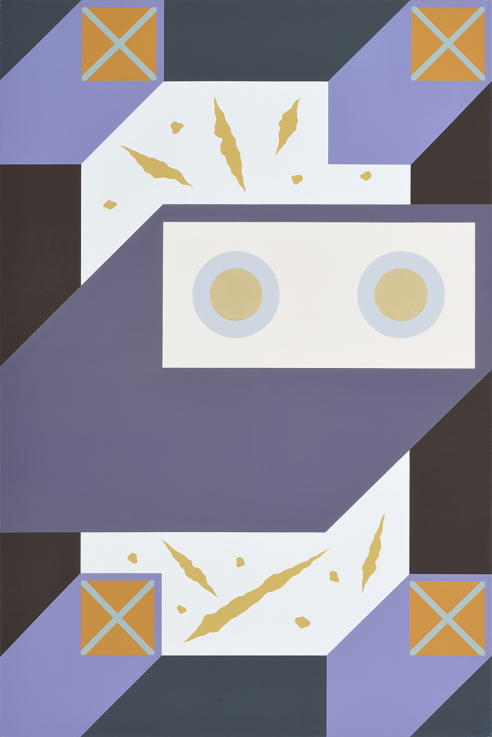The painting entitled Outburst is a typical work by Imre Bak from the nineties. While it also bears the general characteristics of his abstract, geometric imagery (including distinct planes separated by hard edges, homogeneous colour fields), certain features (such as the illusion of spatiality, the bio- or anthropomorphic shapes, the broken colours) push the boundaries of representation by dissolving strict geometry. To construct the pictorial space, the painter uses planes of different sizes, shapes and colours, which are essentially rectangular, but which, because of the overlapping and cropping of the image, become a whole only in the mind’s eye. Illusory solids rise from the picture plane: four tower-like structures surround a centrally positioned cuboid. Imre Bak’s space is a fictitious and “impossible” space, since the positive forms can be interpreted as negative, while the seemingly solid base could be the open, infinite space itself, yet the image can be associated with a concrete building complex or part of a city seen from above. Bak also adds some of his recurring motifs to the painting, such as the x-sign, the circle and the irregular shapes moving in a relatively free orbit, which can be associated with a leaf, a female genital organ or even a galaxy. Together, the elements of the picture thus implement the painterly programme of the spatial extension of the plane.
László Hemrik
